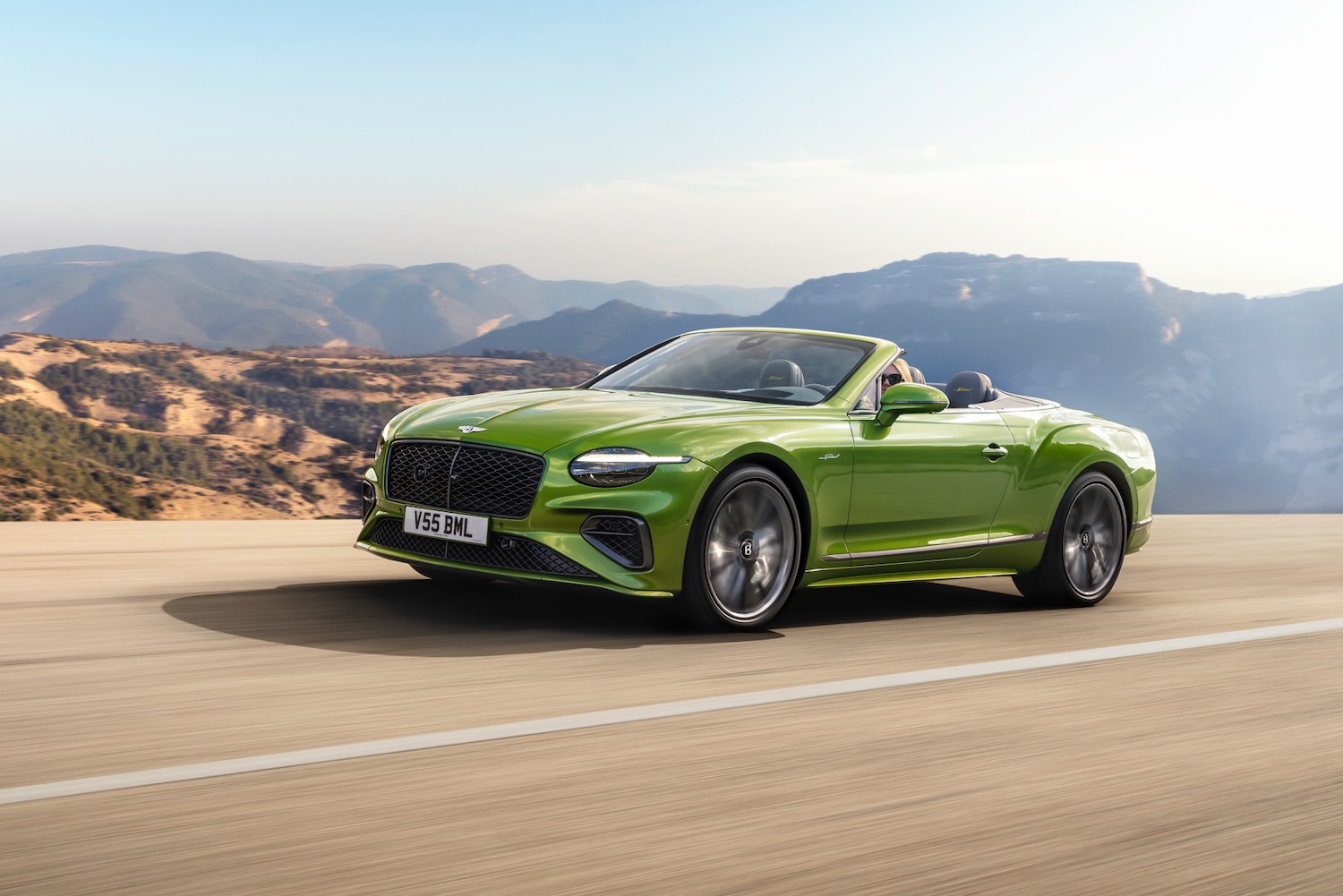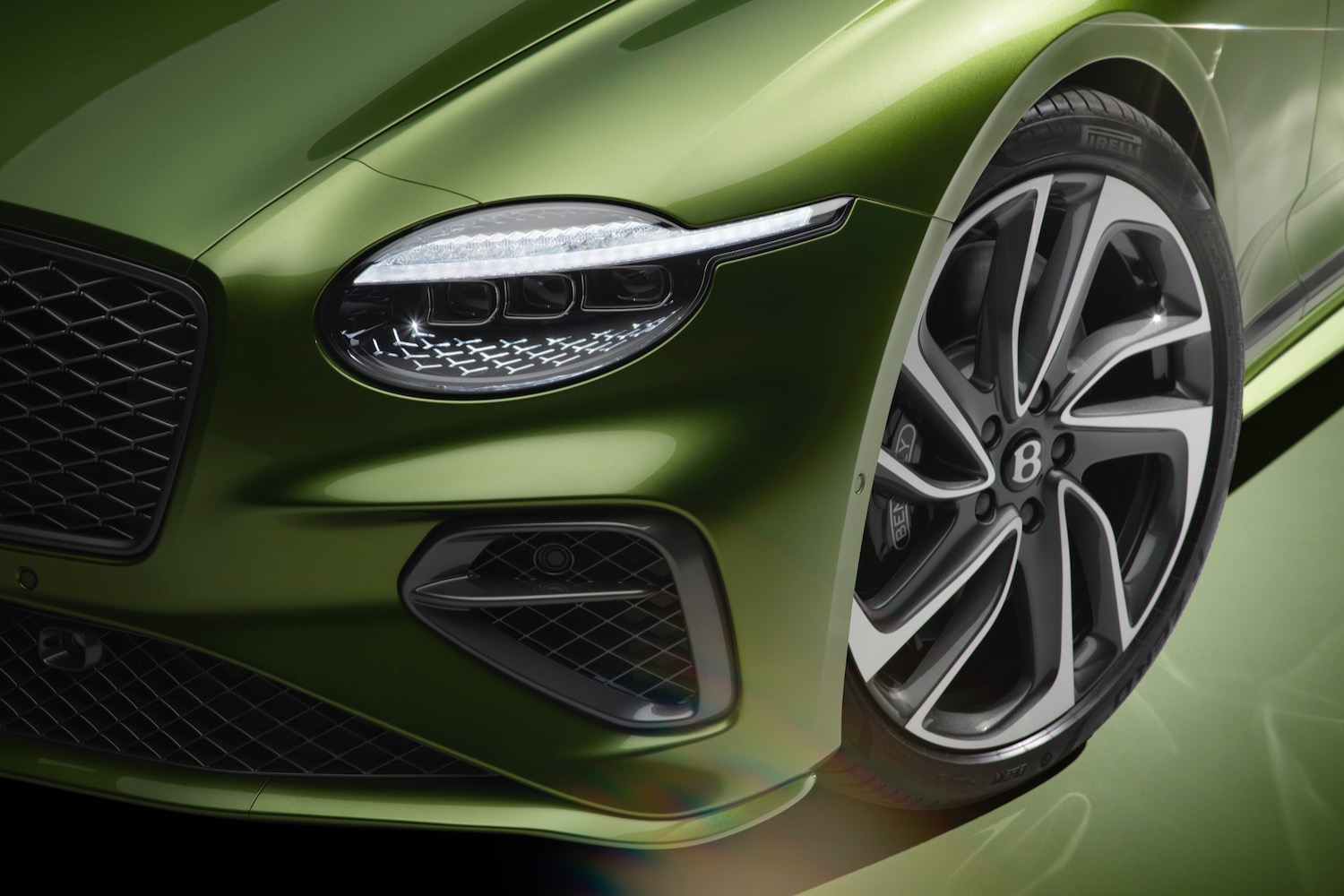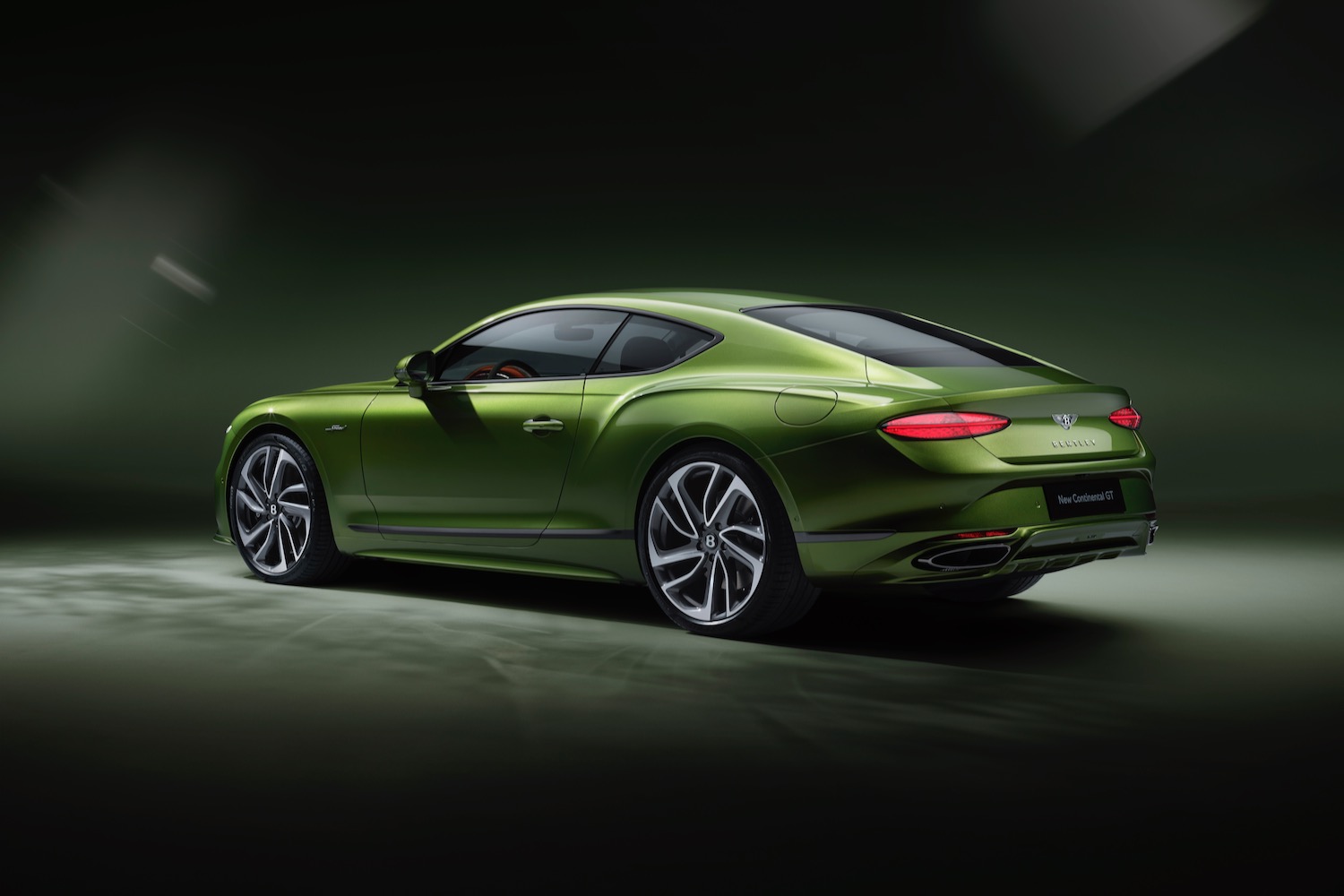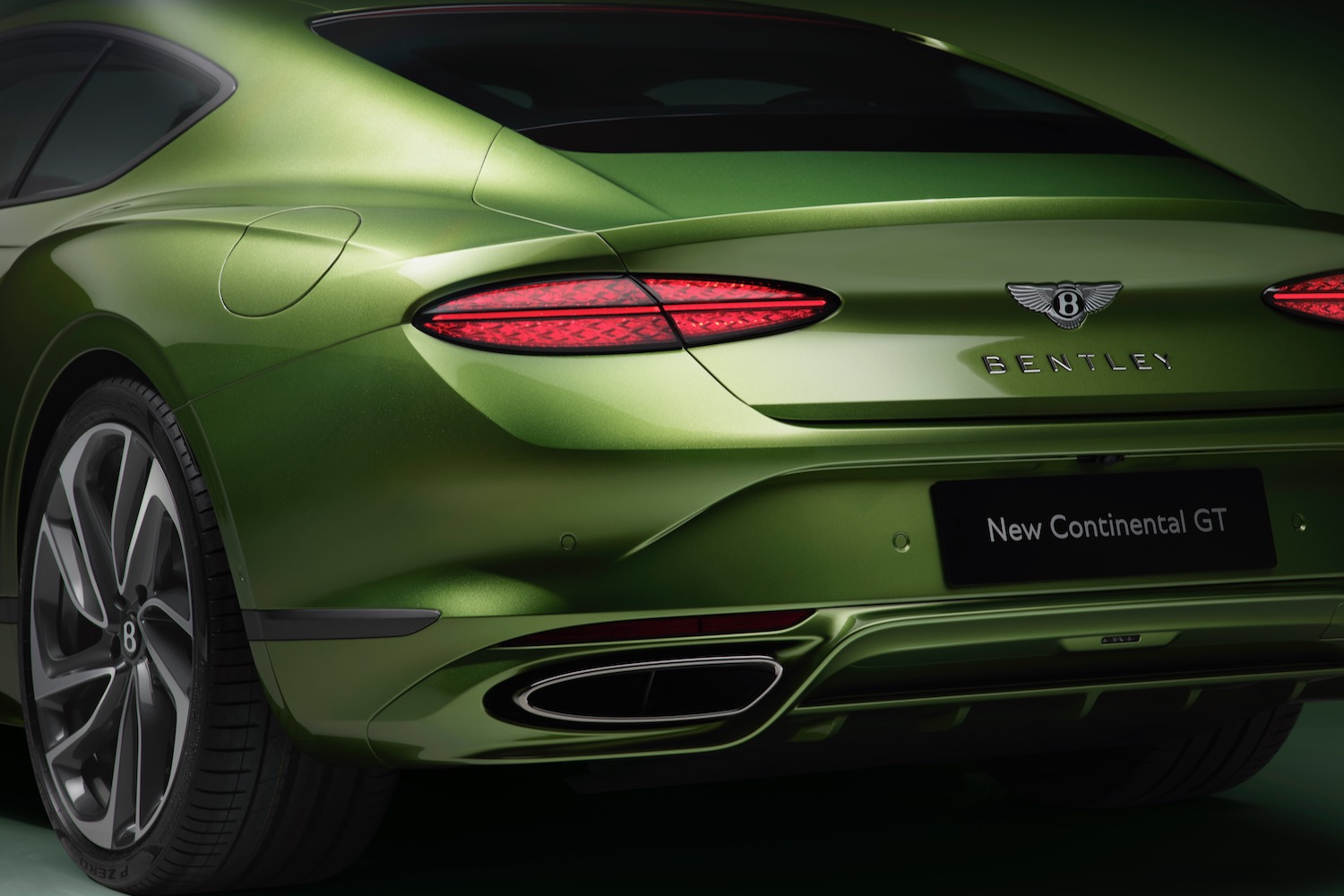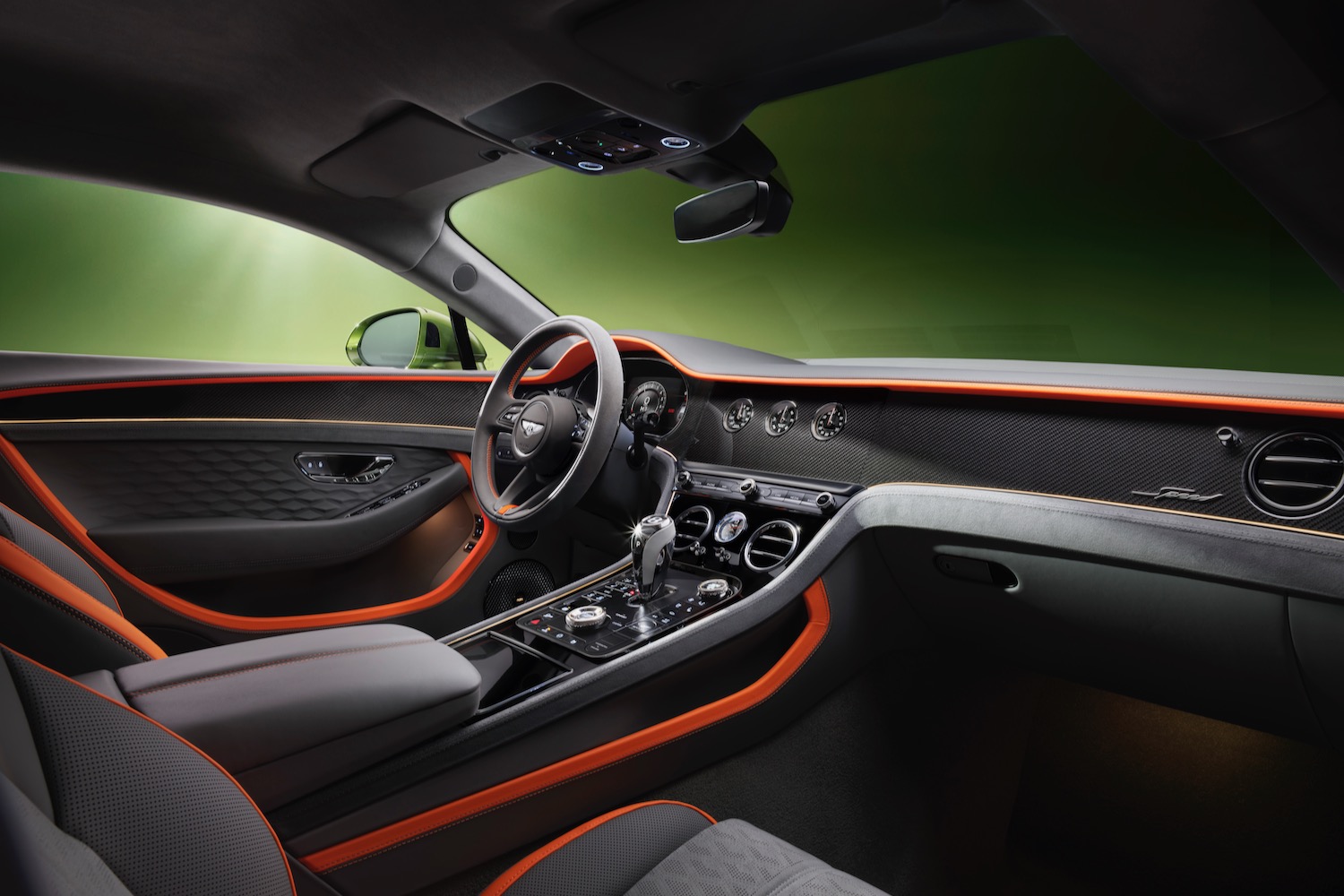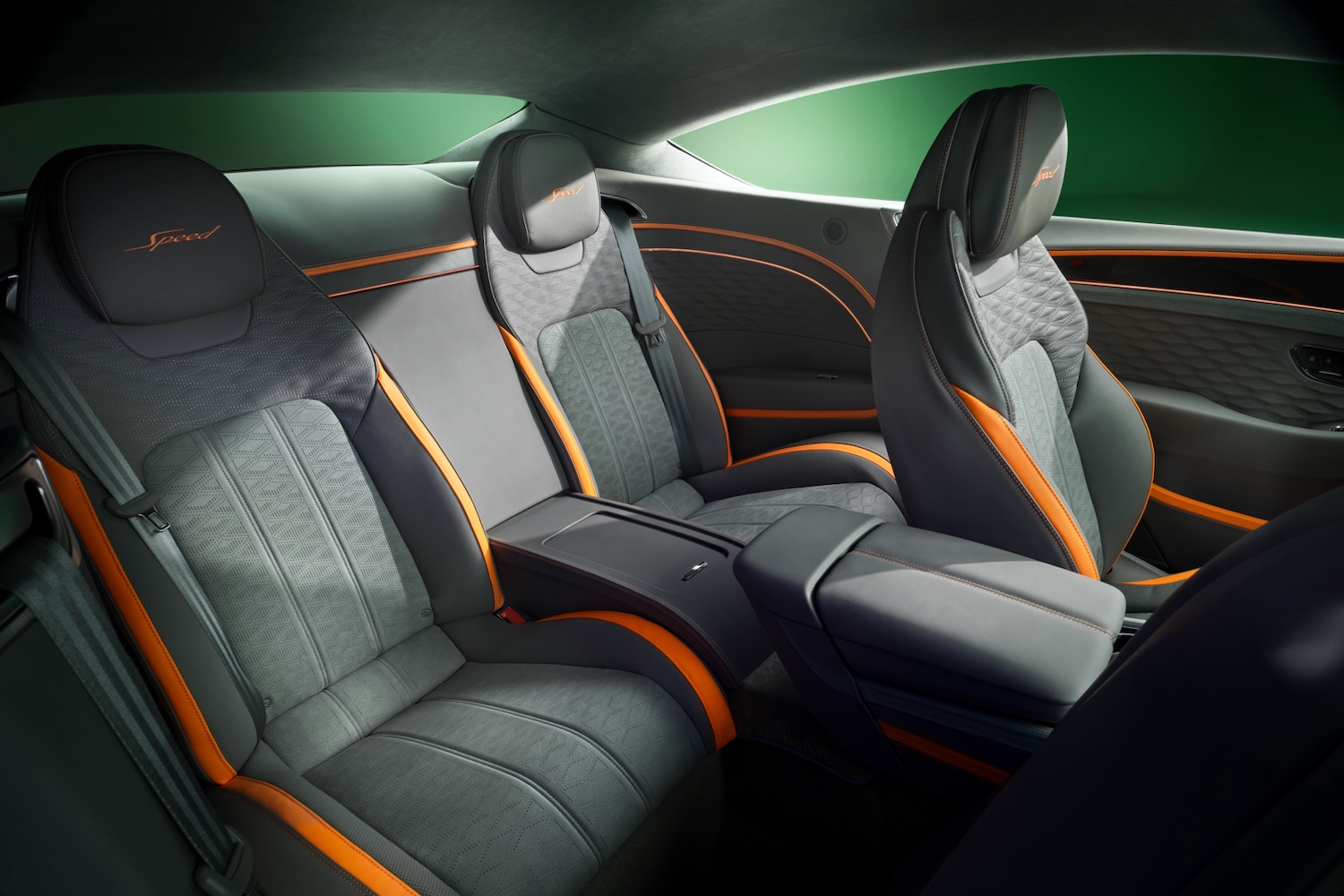
A few years ago, Bentley set off on a path to electrification that was paved with plug-in hybrids and added models like the Bentayga Hybrid to its lineup. However, that path was more of a parallel side road, with plug-in hybrids augmenting the lineup rather than replacing traditional gasoline-only models. Now they’re heading for the fast lane.
Unveiled Tuesday, the fourth-generation Bentley Continental GT Speed coupe and GTC Speed convertible are the most powerful Bentley road cars ever — and they’re plug-in hybrids. These performance models herald a new era for the Continental GT, Bentley’s signature vehicle, along with its GTC convertible variant.
The last Continental GT and GTC Speed used a 6.0-liter twin-turbocharged W12, but that’s been replaced with what Bentley calls the Ultra Performance Hybrid powertrain where a 4.0-liter twin-turbocharged V8 is teamed with an electric motor housed in an eight-speed dual-clutch transmission. Together, they produce 771 horsepower and 738 pound-feet of torque. That represents increases of 19% and 11%, respectively, over the non-hybrid powertrain. Bentley estimates a zero-to-60 mph speed of 3.1 seconds, with a top speed of 208 mph in hybrid mode and 87 mph in electric mode.
A 25.9-kilowatt-hour battery pack provides up to 50 miles of electric range based on the EU testing procedure (expect a lower number from the testing cycle used in the United States). The pack is mounted behind the rear axle to improve weight distribution. The added weight of the pack will also likely be less noticeable in the Continental, which has always been more of a fast ocean liner than a racing yacht. An onboard AC charger deliver 11 kilowatts of peak power, allowing for a full recharge in just under three hours, but Bentley hasn’t discussed DC fast-charging availability.
The all-wheel drive Continental GT Speed and GTC Speed also feature four-wheel steering, torque vectoring that can shunt power front to back and side to side, an electronic limited slip rear differential for better control of traction at the back, adaptive air suspension, and Bentley’s active anti-roll system, which uses actuators to tug the body upright should it start to lean over in corners.
The powertrain and chassis tech are wrapped in revised styling that isn’t a big departure from the previous Continental models. The most noticeable change is single headlights (the first on a mass-produced Bentley since 1959) with horizontal “eyebrow” elements and Matrix LED tech that allows for a more gradual transition between lit and unlit areas for a more natural feel, according to Bentley.
The interior again incorporates the Bentley Rotating Display, which allows the 12.3-inch infotainment touchscreen (compatible with wireless Apple CarPlay and Android Auto) to be hidden when not in use. A 10-speaker audio system is standard, but customers also have the option of a 16-speaker Band & Olufsen system or 18-speaker Naim system with bass transducers built into the front seats. Those seats also have 20-way power adjustment, automatic climate control, and a posture-adjustment feature.
Production of both the Continental GT Speed and Continental GTC begins later this year at Bentley’s factory in Crewe, England, with deliveries following shortly after. Bentley isn’t discussing pricing, but expect it to be well into the six-figure range. Non-Speed versions of both the GT and GTC should arrive at a later date as well.
